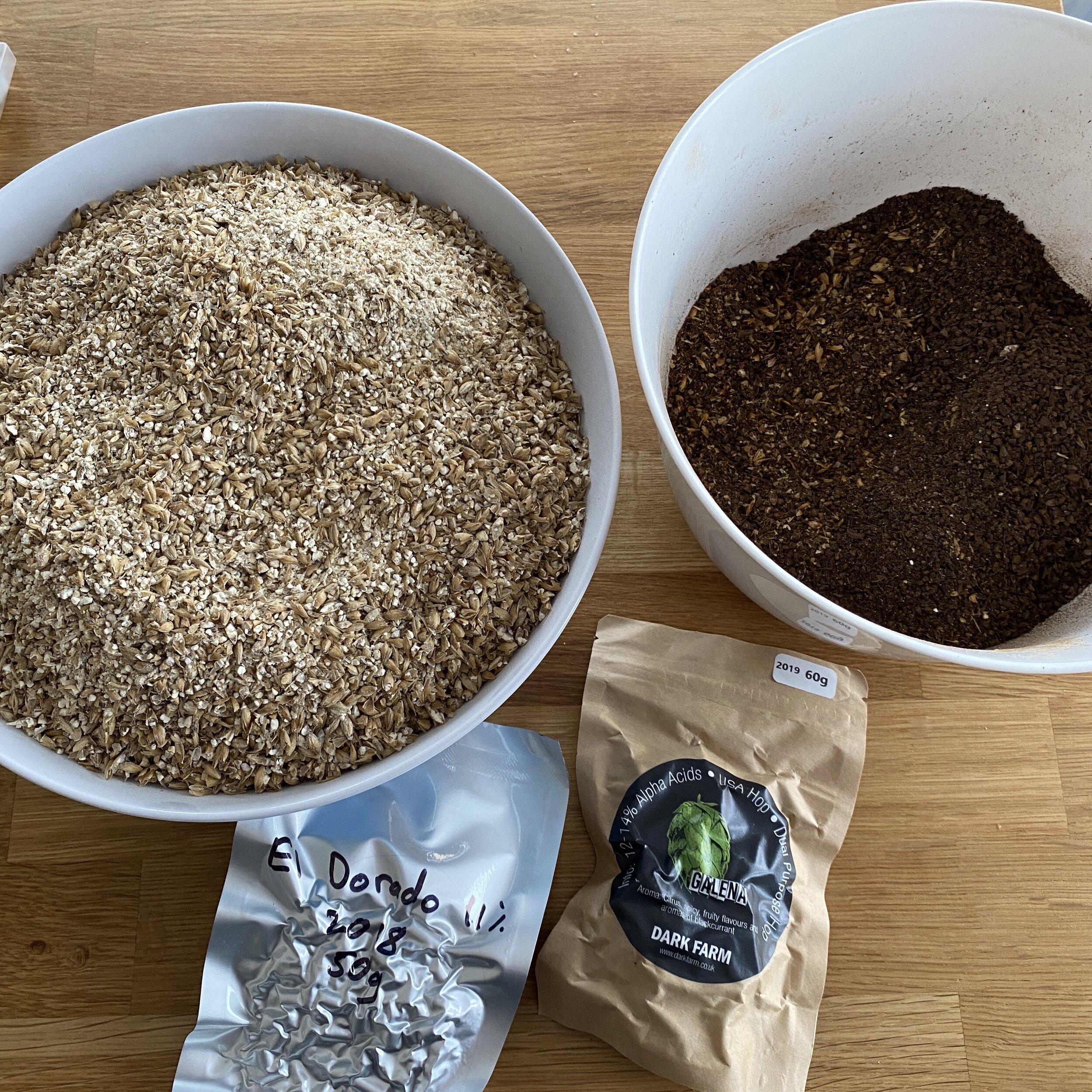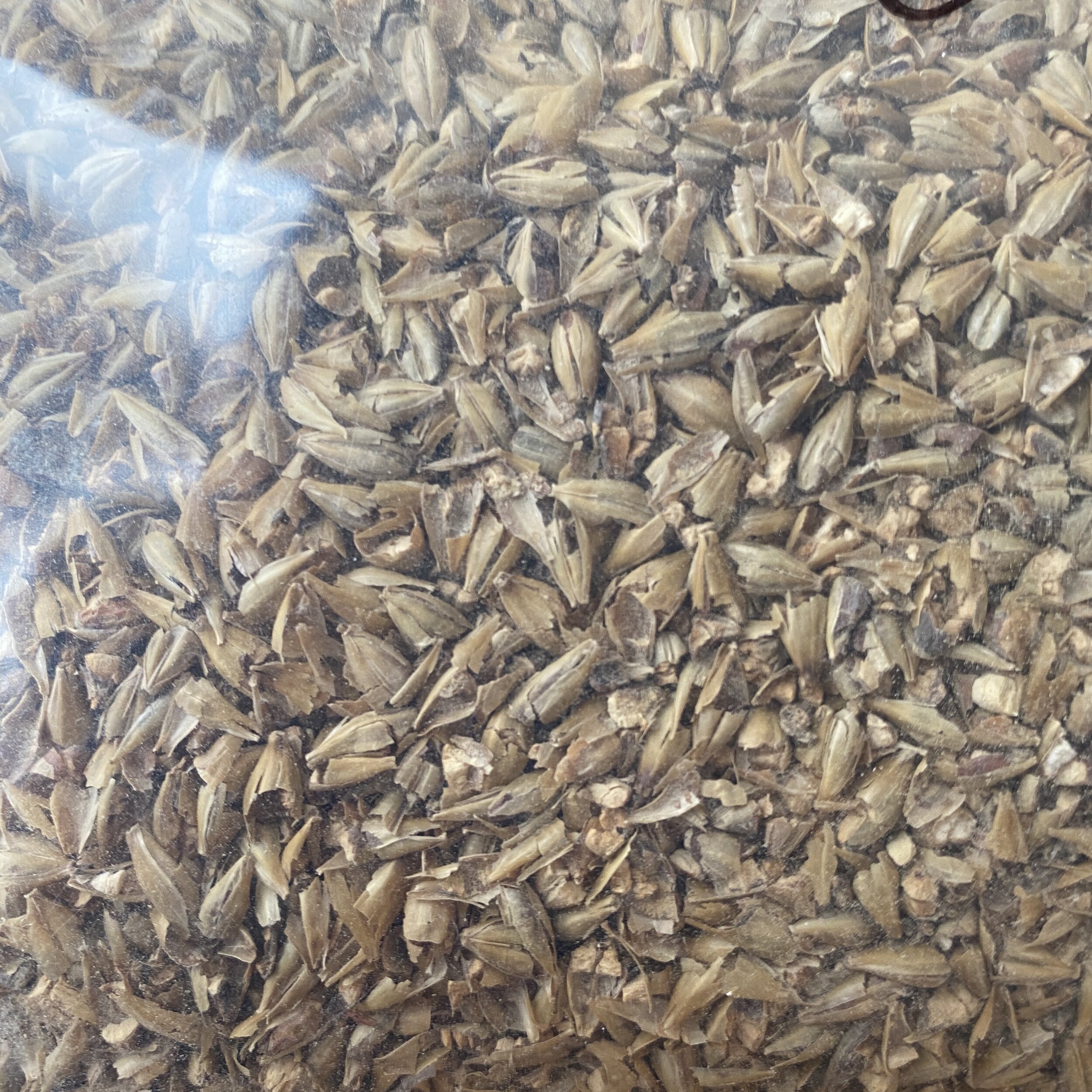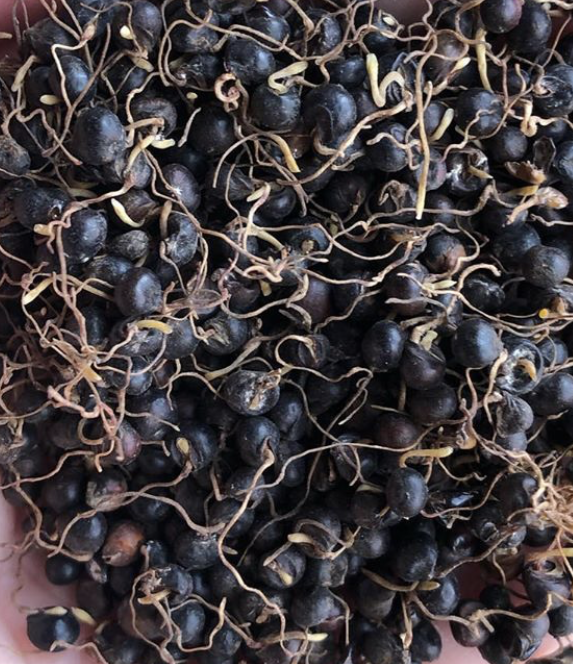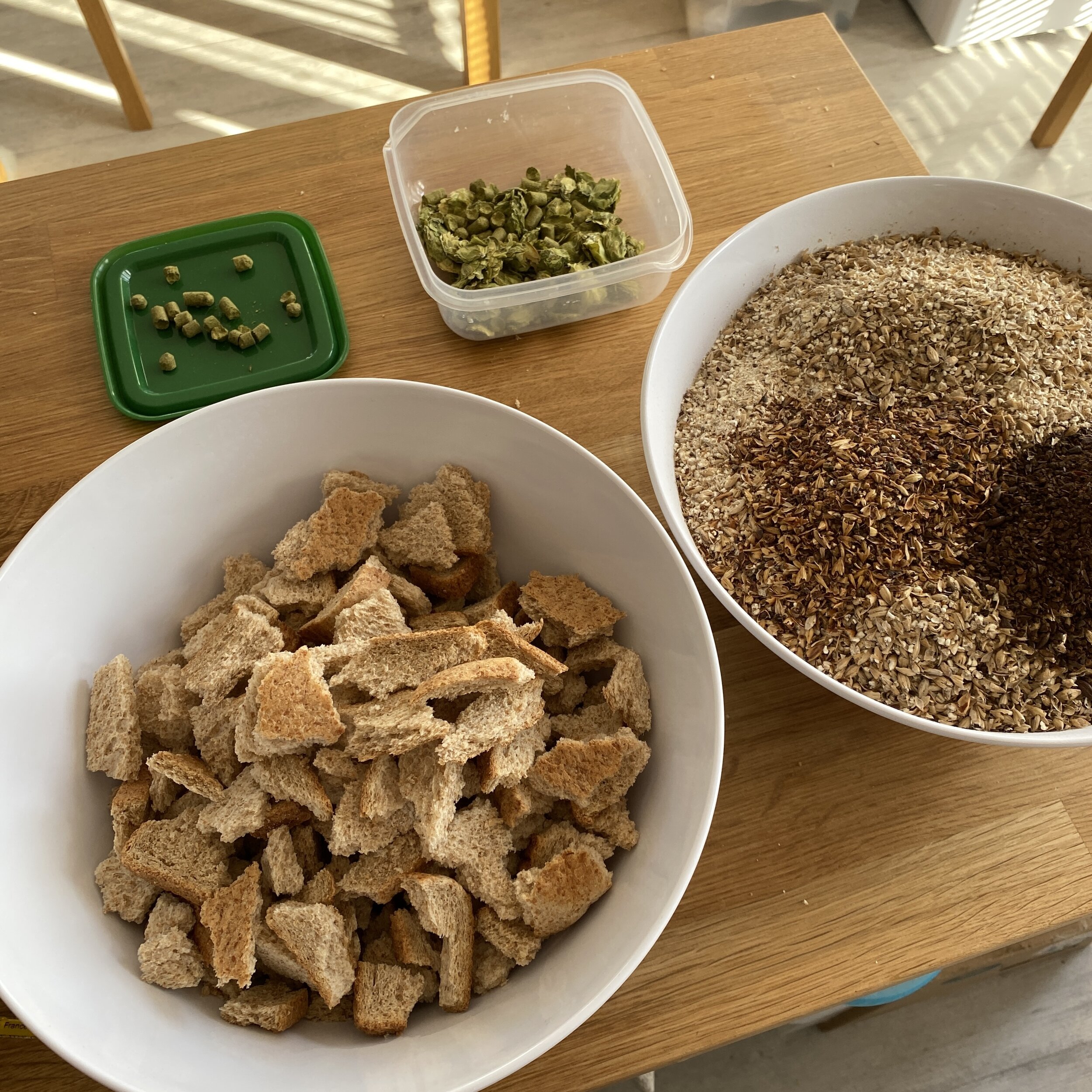What does Malt mean in beer?
Base malts and speciality malts ready for brewing
Let’s continue my series of posts looking at the main ingredients in beer. As we know, beer is made up of 4 main ingredients - water, hops, malt and yeast. But what is malt anyway? And what does it do?
Malt is the backbone of the beer in your glass. It adds colour, flavour, aroma, and the all important fermentable sugars. It influences the ABV and can be one of the most complex parts of a beer recipe.
In this post, I’m going to take you through what malt is, how it is produced and the effect it has on your beer. By the end, you’ll love malt just as much as you do hops!
Crushed malts - this allows water to access the enzymes and starches during the mash
What is malt?
When we say ‘malt’ in beer we generally mean malted barley. However, there can be a variety of different grains in your glass. You also get malted wheat and oats - the malt part is what is important. Then there are adjunct grains, which are unmalted, such as rye, rice, corn spelt and flaked oats. Sorghum is a less well-known grain that is used traditionally in Africa and adds a sour element to the beer (this can be malted or unmalted). Adjuncts add flavour, colour and body, but not fermentable sugars - and sugar is key in brewing.
When a beer is brewed, the grains are steeped in hot water - this is called the mash. Enzymes and starches are extracted from the grains and get converted into fermentable sugars. These sugars are then eaten by the yeast and turned into alcohol and carbon dioxide. The more fermentable sugars, the higher the potential ABV!
Malts are put into two categories - base malts and speciality malts. The grain bill of a beer - the mixture of grains the brewer chooses to put into the beer - will have a high percentage of base malt and then smaller percentages of speciality malts. The base malts are more lightly kilned (more on that in a moment) meaning there will be more fermentable sugars available. Speciality malts are more highly kilned and roasted. This reduces the amount of fermentable sugars available, but adds other colours and flavours - we need these for darker and more complex beers. Deciding on the grain bill of a beer is an art and a science!
Sorghum grains, traditionally used in African brewing
How is malt produced?
I’m going to refer to barley a lot in this part, but the process can be used on other grains as well. The barley is harvested and then dried. It is then soaked to start the germination process in the grains. This wakes up the enzymes we need to convert starches into fermentable sugars. The barley kernels are allowed to sprout, but then the process is stopped by heating the grains and toasting them to different levels.
At this point, a Maltster (that’s a cool title, huh?!) decides what kind of malt is being made. They know exactly how much heat to use and how long to apply it to create the malt they require. This is called kilning. The colour of the grain may change, and this is caused by the Malliard reaction - the same process that browns food.
Kilning is the application of heat with ventilation to dry out the grains. It does not cook them as this would get rid of the starches and proteins we need for the brewing process. Light kilning will produce our base malts, longer kilning and roasting will produce darker malts with toasty, roasty flavours and aromas.
Surplus bread can also be used in place of malted grains in brewing
A Brief History of Malting
When grains were first malted, they were put into rivers in sacks to start the germination process. They would then have been dried over wood fires. Over time the process got bigger, but wood, coal and peat fires would still have been used. The grain would be spread out on perforated, metal flooring with fires lit underneath. The process was hard to control so would have produced some underdone grains, some scorched; and basically produced a brown grain. This would also pick up some of the smoky flavours from the fire. In 1818 however, Daniel Wheeler came along with his ‘Improved Method of Drying and Preparing Malt’. Wheeler had seen how coffee roasters were using rotating drums and engineered a similar machine for malting. As a result, the grains were never exposed to the fire, a more even kilning and roasting could be achieved at higher volumes and the result held less smoky aromas and flavours. Maltsters could now control the temperature the grains were exposed to as well, and new malts were being created - from the lightest base malt to the darkest, most roasted black patent malt. Out of that, new beer styles were created!
Wychwood Hobgoblin Ruby is a good, malty beer to try
What does malt do to beer?
As I said previously, malt adds fermentable sugars to beer, and ultimately this creates the ABV. However, malt isn’t only responsible for alcohol. It also adds colour, flavour and aroma.
The colour of beer is measured on the Standard Reference Method Scale (or SRM for short). The palest Pilsner sits around 1-2 SRM, where the darkest Imperial Stout can be 40+ SRM. Brewers add different grains to the recipe to change the colour. Vienna and Munich malts will add more amber colours, chocolate can add more red or brown if higher amounts are added, patent black malt does exactly what it says on the tin!
Malts can also be stewed during the malting process. This creates sugar crystals within the grain that are then absorbed into the water during mashing. This adds sweetness and caramel-like flavours to the beer - the malts are generally called crystal or cara to denote the sugar crystals and caramel elements.
When tasting beer, there is certain vocabulary we can consider to express the malt aromas and flavours. Think toast, bread crust, brown sugar, chocolate, coffee, roasty, burnt or even doughy. Malt flavours and aromas can be equated to baked goods, breads, cereals and desserts. Some of my favourite beers are more malty because these are the flavours I enjoy! There can also be toffee, nutty and dried fruit notes.
The choices of malt used to brew a beer can range from a very complex mixture to just one base malt. Unlike hops, where we know the characteristics of each variety and look for the ones we enjoy in beer we purchase; malts are integral to the beer, but a bit of an unsung hero! I’ve shared with you what malt is, a short history of how it is produced and what affect is has on your beer. Knowing this about malts can help you pick out different characteristics in your beer tasting and really break down the complex nature of the beer in your glass. You might even had an aha! moment when you realise the fruitiness you are getting from that ruby ale comes from the malts!
I’ll be doing some more posts in the future about different types of grain. Let me know in the comments if you have any questions about malts!





